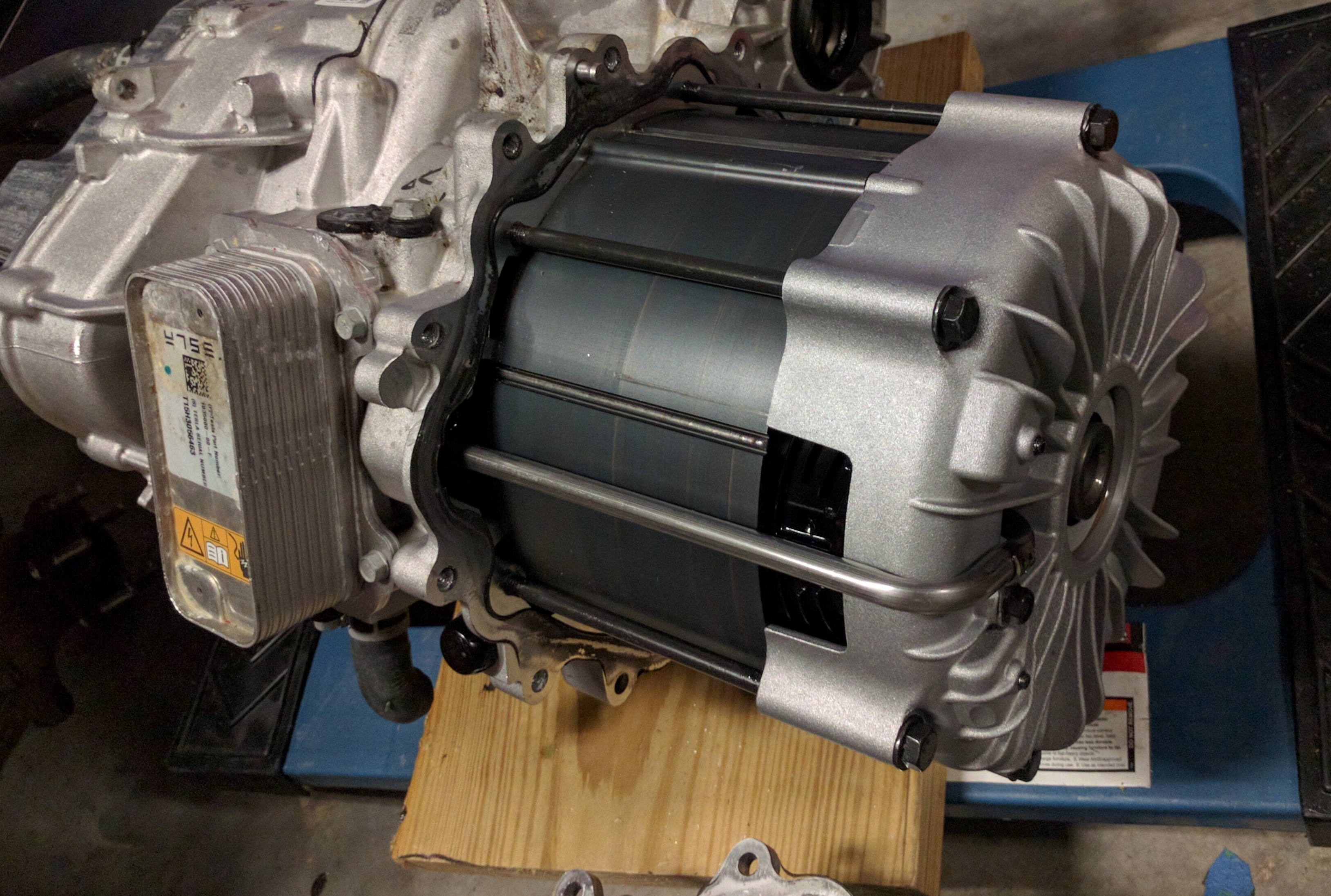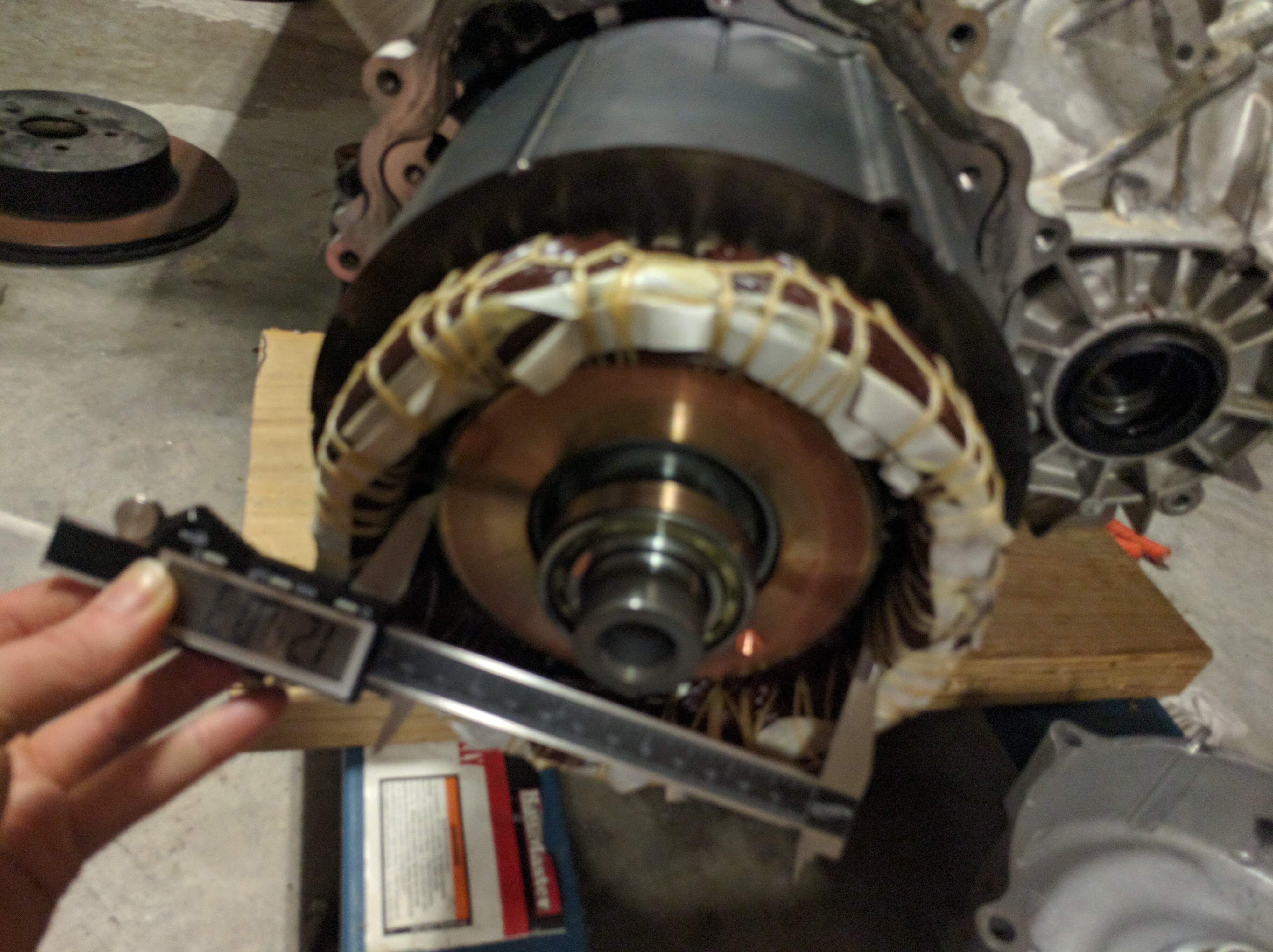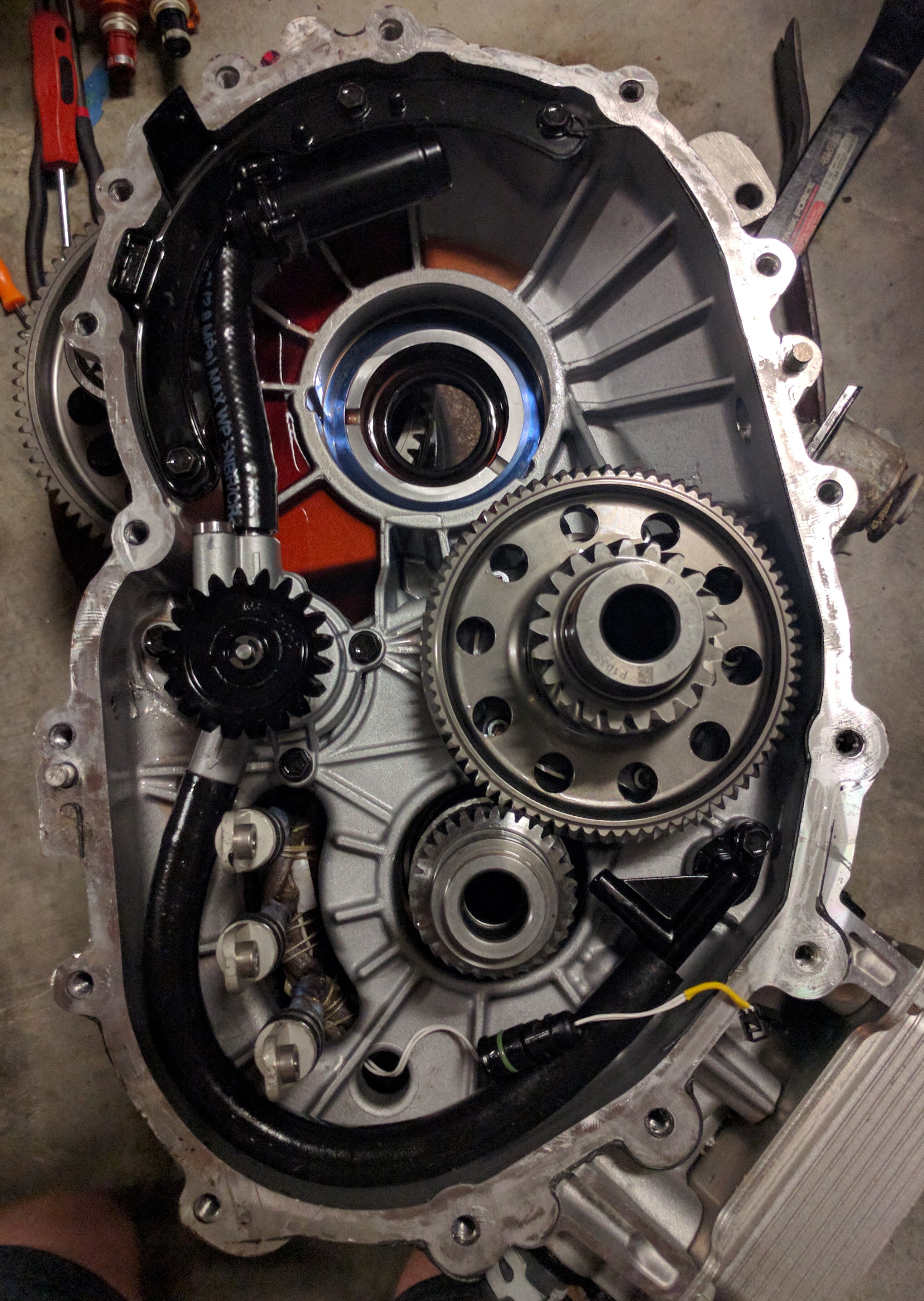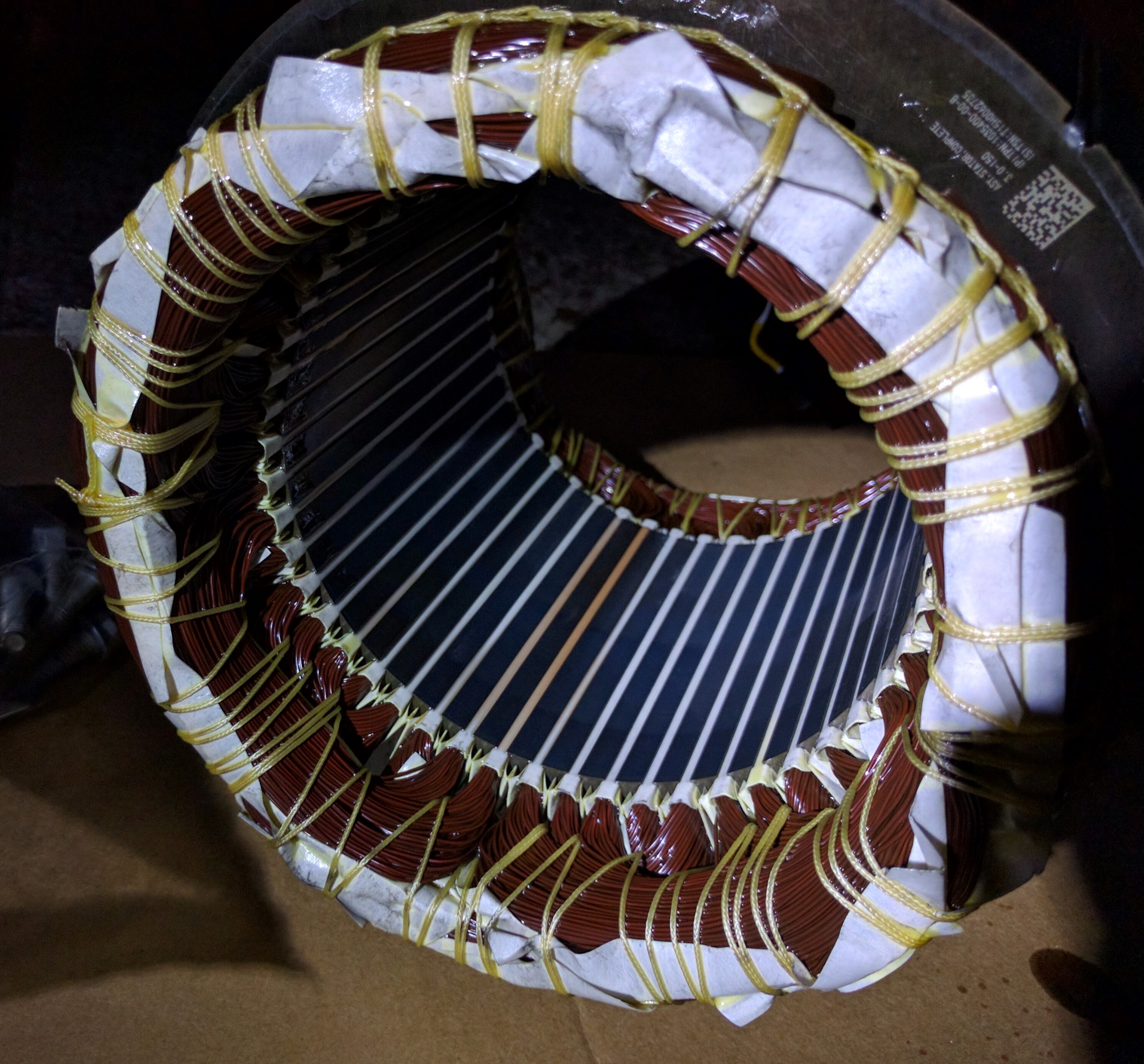Inside the Model S High Efficiency "Next-Gen" Drive Unit
Topsy's First Adventure!

Stator Cover removal
Turns out that the Stator cover is not structural and only serves to seal the stator(and gearbox) from the elements. You can see the stator is held in place with an aluminum end cap with long studs, which also acts as a bearing holder for the end rotor bearing.
The stainless steel tube running along the stator serves to liquid cool the rotor. The tube curves around the end cap and injects fluid into the rotor interior.

Stator Laminations
The stator laminations measure 0.35mm thick. That means there are over 400 of them for the stator alone.
The stator laminations are made from a type of "electrical steel.' They serve to support the stator windings and conduct the stator magnetic fields onto the rotor. A special type of steel is used which has minimal magnetic hysteresis.
Each lamination is electrically isloated from the next. This is done to minimize eddy current losses in the steel, as there are very powerful and rapidly changing magnetic fields generated in the stator windings(and rotor)
By having the laminations isolated, eddy currents can only flow within the thin plane of each lamination and not between laminations as if it were a solid steel core. This is typical for electric motors and generators and not special to the Tesla motor.

Stator and Rotor End
Here we've removed the stator end cap and you can see the bonded end windings. The yellow string and white paper serve to tie it all together as the stator is machine-wound.
The windings are essentially magnet wire. they must be electrically isolated from each-other and it's desirable to have as thin as possible insulation to maximize copper fill.
Rotor diameter is about 129mm. Quite small for an induction motor (IM) good for 240 mechanical horsepower and an estimated 96% peak efficiency!
You can see the rotor ends are made from pure copper. Heavier then aluminum, but the weight is made up for in the improved electrical conductivitty over aluminum, if you drink the copper industries' kool-aid.
The rotor acts as half of a transformer, that also happens to rotate. The stator is used to induce a magnetic field in the rotor just like as is done in a stationary transformer.
This differs from most EV motors which use permanent magnets (PM), as they already have a magnetic field in which to create torque. Furthermore, the rotor on an induction motor's magnetic field has a trait that causes it to 'slip' along the rotor. This makes them significantly more tricky to control (properly) then a PM motor!
However, the Tesla rotor does not have "windings." It's actually what's called a squirrel-cage type rotor. It's essentially a tweaked version of what Tesla invented over 100 years ago! (only because Edison hadn't kicked his ass.)

Gearbox
In this picture we've removed the differential. You can see it's a two stage gear reduction with helical gears. (The diff can be seen in the upper left under the box.)
The oil pump is driven mechanically by the differential gear.

Stator Interior
TBW
